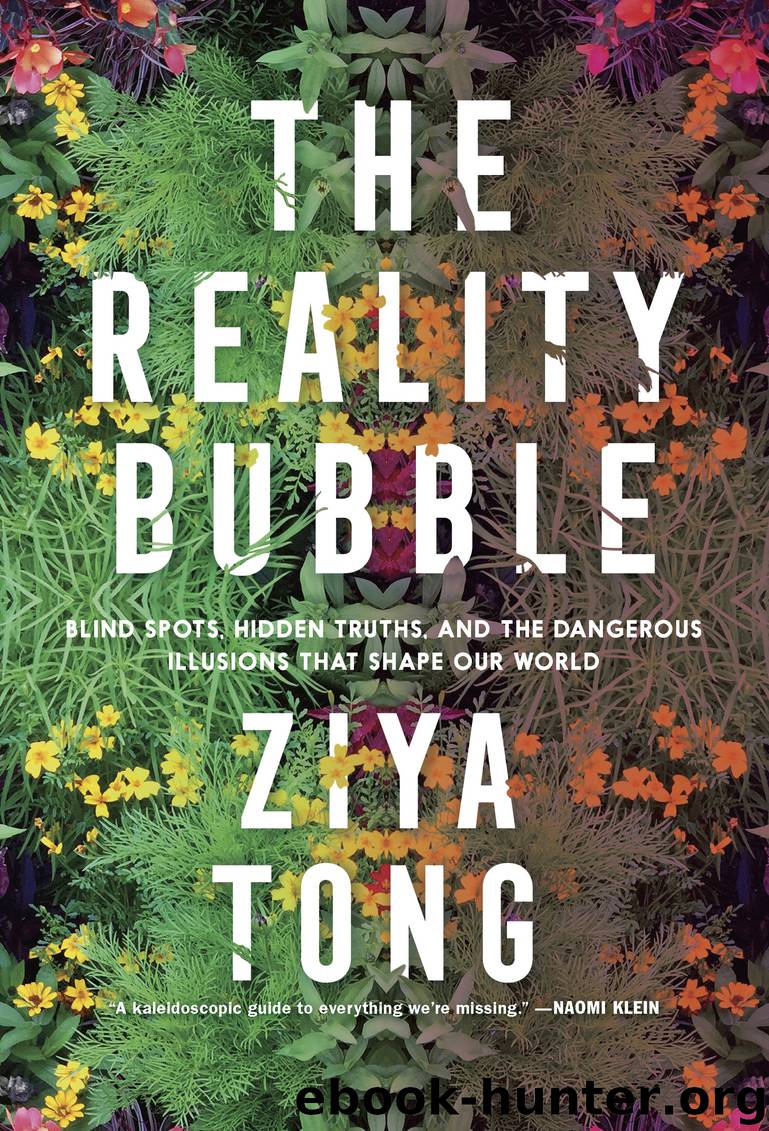The Reality Bubble by Ziya Tong

Author:Ziya Tong
Language: eng
Format: epub
Publisher: Penguin Canada
Published: 2019-05-14T04:00:00+00:00
* * *
—
IN BEIJING, A NEW COLOUR was named by the general public in November 2014. They called it “APEC blue.” It was the result of a mission that began months earlier, when the Chinese central government tasked 434,000 staff in the regions of Beijing, Shandong, Tianjin, Shanxi, Hebei, Inner Mongolia, and Henan with orders to execute a grand plan. The teams had one ambitious goal: to change the colour of the sky.
In the days leading up to the arrival of international delegates for that year’s Asia-Pacific Economic Cooperation (APEC) summit, 11.4 million vehicles were ordered off the roads and over ten thousand industrial plants suspended production. Under strict supervision, close to forty thousand other factories were put on a rolling schedule to limit their working hours and consequently the smoke and exhaust fumes they normally emitted.
The plan worked spectacularly. For two weeks in November, Beijing’s notoriously thick grey-brown fog cleared and the air pollution fell by a jaw-dropping 80 percent. In its place, ready to welcome foreign dignitaries, leaders, and the world press, were soft white clouds and a brilliant APEC blue sky. But soon after the summit ended, the blue was gone too.
Today, Chinese citizens dream wistfully of the APEC blue skies of 2014, or the “military parade blue” skies of 2015. Scientists, for their part, have worked out why the skies darken so quickly once the temporary constraints on polluting are removed. It turns out that after the quick fix for a special event is over, there’s an industrial backlash. Following the sharp drop in pollution for the duration of the event, there is a “retaliatory spike” of polluting as businesses ramp up to compensate for lost time and money.*13 Not surprisingly, perhaps, there is a direct relationship between economic activity and pollution.
In polluted cities, the term “AQI” is as familiar to anyone as “Celsius” or “Fahrenheit.” It stands for air quality index, a scale designed to go from 0 to 500. Just by looking at the degree of haze, experienced residents can calculate the air quality. If you see a bit of haze on the horizon, that’s 100. By 200, the grey horizon has closed in on you. At 300, the pollution haze is blocking the sun.
An AQI of 300 and above is considered hazardous to human health. Health effects include “serious aggravation of heart or lung disease and premature mortality in persons with cardio-pulmonary disease and the elderly; serious risk of respiratory effects in the general population.” Off the charts, at over 700, the air is described as industrial smoke. It’s so thick that it’s “chemical-tasting, eye watering.” Coupled with a sandstorm, on May 4, 2017, the air was literally breath-taking. With an AQI of 905, Beijing had gone three times past the hazardous limit.
On bad days, let alone severe days, spending even twenty minutes outside can leave people feeling sick. Sore throats and coughs without cold or flu symptoms have become common. And for residents, especially those who live and work near factories, the coughs do not seem to go away.
Download
This site does not store any files on its server. We only index and link to content provided by other sites. Please contact the content providers to delete copyright contents if any and email us, we'll remove relevant links or contents immediately.
Man-made Catastrophes and Risk Information Concealment by Dmitry Chernov & Didier Sornette(5921)
The Revenge of Geography: What the Map Tells Us About Coming Conflicts and the Battle Against Fate by Kaplan Robert D(4035)
Zero Waste Home by Bea Johnson(3777)
COSMOS by Carl Sagan(3554)
Good by S. Walden(3486)
In a Sunburned Country by Bill Bryson(3481)
The Fate of Rome: Climate, Disease, and the End of an Empire (The Princeton History of the Ancient World) by Kyle Harper(3003)
A Wilder Time by William E. Glassley(2818)
Camino Island by John Grisham(2762)
The Ogre by Doug Scott(2631)
Organic Mushroom Farming and Mycoremediation by Tradd Cotter(2626)
Human Dynamics Research in Smart and Connected Communities by Shih-Lung Shaw & Daniel Sui(2466)
Energy Myths and Realities by Vaclav Smil(2438)
The Traveler's Gift by Andy Andrews(2409)
9781803241661-PYTHON FOR ARCGIS PRO by Unknown(2321)
Inside the Middle East by Avi Melamed(2305)
Birds of New Guinea by Pratt Thane K.; Beehler Bruce M.; Anderton John C(2224)
A History of Warfare by John Keegan(2186)
And the Band Played On by Randy Shilts(2129)
